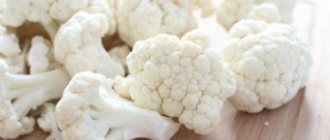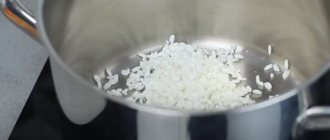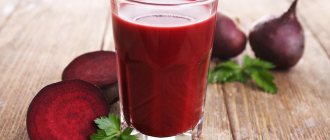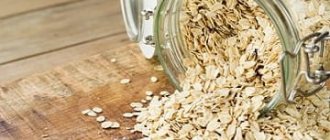Introduction to the diet: at what age can vegetables be eaten?
According to WHO recommendations, the first complementary foods can be introduced into a baby’s diet from the 6th month [1], but the schedule of administration depends on individual characteristics. Mother's milk or modern formulas provide the child's body with all the necessary nutrients for up to six months. If the pediatrician diagnoses underweight, this may be a reason to start complementary feeding at 4 months.
Often, porridge is first introduced into a child’s diet, and only then they are offered to try vegetables. Your doctor may recommend starting complementary feeding with vegetables if your baby is overweight.
The best option is to start vegetable feeding with zucchini. This is a hypoallergenic product that is quickly absorbed and does not irritate the delicate gastric mucosa.
Content of vitamins and minerals
Many adults consider zucchini to be completely useless in terms of nutritional value. However, this product is recommended to anyone for organizing dietary nutrition.
Comparing zucchini with regular pumpkin, one can note their low sugar content. But this disadvantage is completely offset by the saturation of mineral salts, which play a decisive role in the metabolic processes of the body.
Zucchini pulp is rich in vitamin C. The product is a valuable source of iron, copper, and other elements that are involved in restoring blood composition.
Eating boiled zucchini in the form of puree becomes indispensable for children in the first years of life. Many children suffer from physiological anemia, which is helped not so much by taking vitamin complexes as by additional dietary nutrition.
How to choose a vegetable for zucchini puree: tips
Expert opinion
Sokolova L. S.
Pediatrician of the highest category
Fresh and properly grown vegetables should be placed on the child’s table. It is better to choose young fruits. The safest thing is to grow zucchini for complementary feeding yourself or buy them from the garden from a conscientious gardener.
Product in a jar . It is better to prefer high-quality puree in a jar to a greenhouse specimen from a supermarket. It’s up to the parents to decide which company’s products to choose.
Fresh zucchini
. You need to choose vegetables at the market carefully and meticulously. If the seller cannot tell in detail about the origin and freshness of the goods, most likely he purchased the products in the same place where they are supplied to chain stores.
Frozen zucchini . If the baby was born in the spring and the time for the first vegetable feeding comes during the cold season, you should find out in advance how to prepare frozen purees. Frozen zucchini retains a small amount of vitamins, but it is healthier and safer than store-bought winter vegetables.
Signs of a good zucchini that can be used for baby food
- The skin is smooth, has a glossy sheen, thin and can be easily pierced with a fingernail;
- there are no growths, damage or traces of rot on it;
- the cut of the stalk is smooth, not darkened;
- no dents are formed when pressing on the fruit;
- If you cut a zucchini, small droplets of moisture will appear on the pulp;
- the younger the fruit, the more pronounced its edges are; mature zucchini is smooth;
- the seeds are soft and unripe, and the cut of the vegetable has no veins.
How long should you cook zucchini to feed your baby?
Of course, you can buy your child ready-made purees in the store. But not every baby will want to eat such a dish, and mothers do not know what raw materials baby food manufacturers use to prepare zucchini complementary foods. Therefore, the best option is to cook the puree yourself. But how long should you cook the first course of zucchini for a baby so that the beneficial elements are retained in full in the dish?
Read here when to introduce meat into complementary foods for your baby.
Child nutrition. Which products to choose?
At what age can a child be given a banana? Read here.
Zucchini can be cooked baked, boiled in water or in a slow cooker. Recommended cooking/baking time is 10-15 minutes , when the vegetable is softened. Then the zucchini needs to be mashed so that it turns into a homogeneous mass. If the puree is too thick, it can be diluted with zucchini broth, baby formula or breast milk.
Since the squash feed will not cook for long, it is not at all difficult to prepare it fresh every time. In general, young mothers should adopt the rule that children should eat only freshly cooked food. After all, it’s better to buy a few fresh vegetables, cook a piece, and freeze the rest for later.
Recipes: how to cook zucchini for first feeding
Once you are sure that the vegetable is suitable for complementary feeding, you can begin cooking. Before cooking zucchini for baby food, it should be washed and dried with a paper towel. It is not necessary to cut the skin off a young vegetable. First, cut off the stem and bottom of the fruit, then cut it crosswise and remove the seeds if they are already formed. The remaining pulp is cut into medium-sized cubes.
If you have any doubts about the quality of the vegetable, you can soak the cubes in cold water for one hour. This procedure is used to wash out nitrates from the product.
To prepare complementary foods from zucchini, one fruit is enough. The young vegetable cannot be too large - the output will be from one hundred to two hundred grams of puree. There are two options for how to cook zucchini:
1. Boil in a small amount of water:
- pour hot water into the cubes so that it does not completely cover them;
- then, cover with a lid, cook until tender over medium heat.
2. Steam the zucchini in a slow cooker or in a sieve set over a pan of boiling water. Steaming the dish will take a little longer: three to five minutes. But to preserve vitamins and microelements, the second option is preferable.
How long to cook a vegetable is decided based on its degree of maturity. Young zucchini is boiled for no more than five to seven minutes. If it is overripe, the cooking time will take up to fifteen minutes.
It is easy to determine whether zucchini is ready for complementary feeding: the cubes lose their shape and are easy to crush with a fork.
The cooked mass is cooled and thoroughly ground in a blender. It is not necessary to add liquid; complementary foods should be offered to the child in the form of a homogeneous gruel with a consistency no thicker than kefir. If all the nuances of this simple technology are followed, the baby’s zucchini puree will turn out to be light green or yellowish-green.
That's all you need to prepare zucchini puree for your first feeding. The recipe does not contain any ingredients other than vegetables and water. You can add salt, spices and oils only after the baby gets comfortable with the monoproduct and learns to eat zucchini in combination with other complementary foods.
What beneficial properties does zucchini have?
It is not for nothing that zucchini is chosen as the first complementary food for babies. This vegetable is preferred for its beneficial properties:
- does not cause allergic reactions;
- You can cook the vegetable for those children who have problems with stool - puree and other dishes made from it help normalize the functioning of the digestive tract;
- Cooking zucchini is quite easy, it has a pleasant sweetish taste;
- it contains many vitamins (mainly C and B) and minerals (iron, potassium, magnesium, phosphorus);
- it helps strengthen the baby's immunity;
- if you freeze zucchini correctly, your child will be able to enjoy it in the winter, while the vitamin composition of such dishes will remain virtually unchanged;
- the vegetable is so well absorbed by the body that it can be introduced into children’s diets from 3-4 months after birth;
- it does not provoke bloating in the baby and does not cause colic.
If we consider specifically the vitamin composition of this wonderful vegetable, then zucchini contains:
- monosaccharides and disaccharides;
- unsaturated fatty acids;
- alimentary fiber;
- vitamins C, H, A and PP;
- iron, potassium, zinc, magnesium, calcium and many other useful trace elements;
- B vitamins;
- proteins fats carbohydrates;
- organic acids.
Thanks to this composition, zucchini dishes are very useful for a child, especially in the form of first complementary foods. Therefore, it is imperative to introduce it into the daily children’s diet.
How to freeze zucchini for baby food
To continue proper and healthy feeding during the winter, you can store vegetables in the freezer. Preparing zucchini for freezing is very simple:
- wash and cut into cubes, as before cooking;
- spread in a thin layer on a flat cup and, covering the top with foil, put in the freezer for an hour;
- then the frozen cubes are transferred to an airtight container and put back until used;
- It is important to use freezer-safe containers or a foil envelope.
It is better to take care of supplies in advance. Freezing zucchini and subsequently preparing dishes from reliable raw materials is more economical and smarter than buying untested products in winter. It is better to cook zucchini that has been frozen for one time only. They should not be allowed to thaw; they must be immediately immersed in hot water.
Features of choosing ingredients
Zucchini grown in your own garden is best suited for making puree. If this is not possible, you can buy these vegetables in season at the market or in a store. The main thing is to know in what place and conditions they were grown.
The vegetable for puree should be as young as possible, with delicate, very soft skin. The seeds have not yet formed inside this zucchini. Its pulp is an ideal basis for preparing first courses for children. You can also use young zucchini to cook delicious pureed soups, bake casseroles and stew for the whole family.
Bon appetit!
Zucchini juice for infants
The freshly squeezed drink is famous for its medicinal properties, has a weak diuretic effect and even increases appetite in children who are reluctant to eat. Treat your baby to zucchini juice 30 minutes before the main meal, but drink it no more than 10 minutes after preparation.
Do not forget about proper processing of the vegetable - always wash it in cold boiled water, peel off the skin and rinse the vegetable again. Zucchini juice is especially rich in vitamin C; to begin with, offer your baby a few drops of the drink and gradually increase its volume to 3 teaspoons.
Zucchini juice normalizes the water-salt balance in the baby's body and has a beneficial effect on the heart rate, and this drink also stimulates the digestion process and does not cause bloating. You can treat your baby to a raw vegetable, but first douse the pulp with boiling water.
This method is suitable for picky children who often refuse purees. Teething babies will also like this option - the pulp will act as a soft and appetizing teether.
Important When giving your baby a piece of zucchini, calculate the size so that the baby cannot swallow it whole. It is also important to ensure that the baby does not “bite off” a small piece - it can be choked on and it will be difficult to digest.
Vegetable puree from zucchini - composition features
Often young mothers are faced with the question of whether it is possible to introduce zucchini into the diet of one-year-old babies and at what months it is better to do this. Pediatricians advise giving it one of the first, because it has unique beneficial properties.
Vegetable composition:
- a large amount of vitamins;
- micro- and macroelements;
- amino acids – replaceable and essential;
- organic fiber;
- pectins;
- organic sugars.
They have a low calorie content - 17 kcal per 100 g. Therefore, these vegetables should be included in the menu of children with weight problems.
Subtleties of cooking technology
Cook the zucchini for no more than 10 minutes; the remaining broth can be diluted with the finished puree.
How long to cook zucchini for first feeding?
- In water – no more than 10 minutes
- For a couple – 15-20 minutes.
How to cook zucchini for first feeding?
In the pan:
Place the fruit cut into medium pieces in a small saucepan and fill them with water so that it barely covers the pieces.
In the steamer:
In accordance with the instructions for the device, vegetables are laid out in an even layer in the steamer bowl in the “cooking vegetables” mode.
In the slow cooker:
Vegetables are placed in a special bowl for steaming in an even layer, the bowl is placed on a special stand in the multicooker.
In a steaming pan:
Pour some boiling water into the pan and place a steamer insert in the pan. There should be enough water so that it is just below the level of the steamer - this way the vegetables will be steamed and not boiled in water.
Next, put the pieces in a double boiler and cover the pan with a lid. Cook them over low heat and monitor the water level in the pan so that all the water does not boil away.











